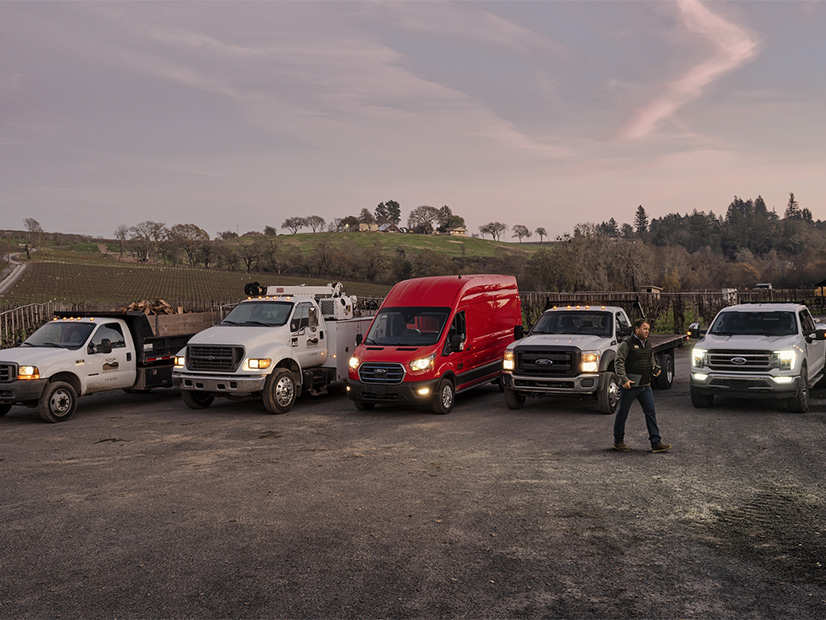
In what’s being called “breakthrough growth,” more than 3,500 zero-emission medium- and heavy-duty trucks were deployed in the U.S. in 2022, more vehicles than in the previous five years combined, according to a new report.
The 3,510 vehicles added in 2022 bring to 5,483 the number of zero-emission trucks (ZETs) purchased and placed into service in the U.S. from January 2017 through the end of 2022. The figures are in a report released by CALSTART, a national nonprofit focused on clean transportation technologies.
Zero-emission trucks are also becoming more widespread. Since mid-2022, seven states — Arkansas, Delaware, Montana, Nebraska, Oklahoma, Rhode Island and Wyoming — have seen their first ZET deployments, the report said.
The zero-emission vehicles tallied in the report include Class 2b to 8 trucks, classifications that are based on weight. The trucks range from larger pickups, cargo vans, and step vans to semis, garbage trucks, and on-road yard tractors.
The trucks include battery-electric and hydrogen fuel cell vehicles. Hybrids aren’t counted.
The 5,483 deployed ZETs are only a minute fraction of the 26.7 million trucks registered in the U.S. in 2022. But continued strong growth in ZET deployment is expected.
“This growth rate is expected to continue its aggressive upward trend as more OEMs enter the market, established OEMs expand their offerings, and fleets become more comfortable with the technology,” CALSTART said in its report.
As of December, more than 136 medium- and heavy-duty ZET models from more than 41 manufacturers were available for purchase.
Shifting Trends
As recently as March 2022, on-road yard tractors were the most-deployed type of zero-emission truck, according to a previous CALSTART report. Vehicles with low range requirements, such as yard tractors, were dominating ZET deployments, the previous report said. (See With Calif. in Lead, Clean Truck Sales Accelerate Nationwide.)
But now, smaller ZETs have taken the lead.
Cargo vans accounted for 2,565 deployments, or almost half of ZETs placed into service from 2017 through 2022. The price of the zero-emission vans compares favorably to that of their gas-fueled counterparts, the report said, and models such as Ford’s E-Transit van and BrightDrop’s Zevo 600 have become popular.
“This market is expected to grow quickly, thanks in part to the new federal Commercial Clean Vehicle Credit, which provides up to $7,500 in tax credits to mitigate the incremental cost,” the report said.
The second-most deployed ZET in the report was yard tractors, with 912 vehicles placed into service.
But pickup trucks scooted into third place, accounting for 831 of ZETs deployed. Zero-emission pickup trucks in the Class 2b weight category became available last year, the report noted.
Deployments by State
Among the 5,483 ZETs placed into service since 2017, CALSTART was able to identify locations for 3,107 of the vehicles.
Among those ZETs, California led the way, with 1,472 deployments. New York followed with 186 ZETs, while Florida and Texas had 137 and 131 deployments, respectively.
Fifty-nine percent of ZET deployments were in states that had adopted California’s Advanced Clean Trucks rule. As of December 2022, those include California, Oregon, Washington, Massachusetts, New York, New Jersey and Vermont. Advanced Clean Trucks requires manufacturers of medium- and heavy-duty trucks to sell an increasing percentage of zero-emission vehicles each year.
California is also home to the Hybrid and Zero-Emission Truck and Bus Voucher Incentive Project (HVIP) for medium- and heavy-duty trucks. From 2011 to 2022, HVIP issued vouchers for 3,149 ZETs totaling $315 million, or roughly $100,000 per vehicle on average, according to CALSTART, which administers HVIP on behalf of the California Air Resources Board (CARB).
California ZET deployment may also get a boost from the Advanced Clean Fleets regulation that CARB adopted in April. (See CARB Adopts Clean Fleets Rule Despite Broad Skepticism.) The regulation requires truck fleet operators to start transitioning to zero-emission vehicles starting in January 2024, and all new medium- and heavy-duty trucks sold in the state must be zero-emission beginning in 2036.


